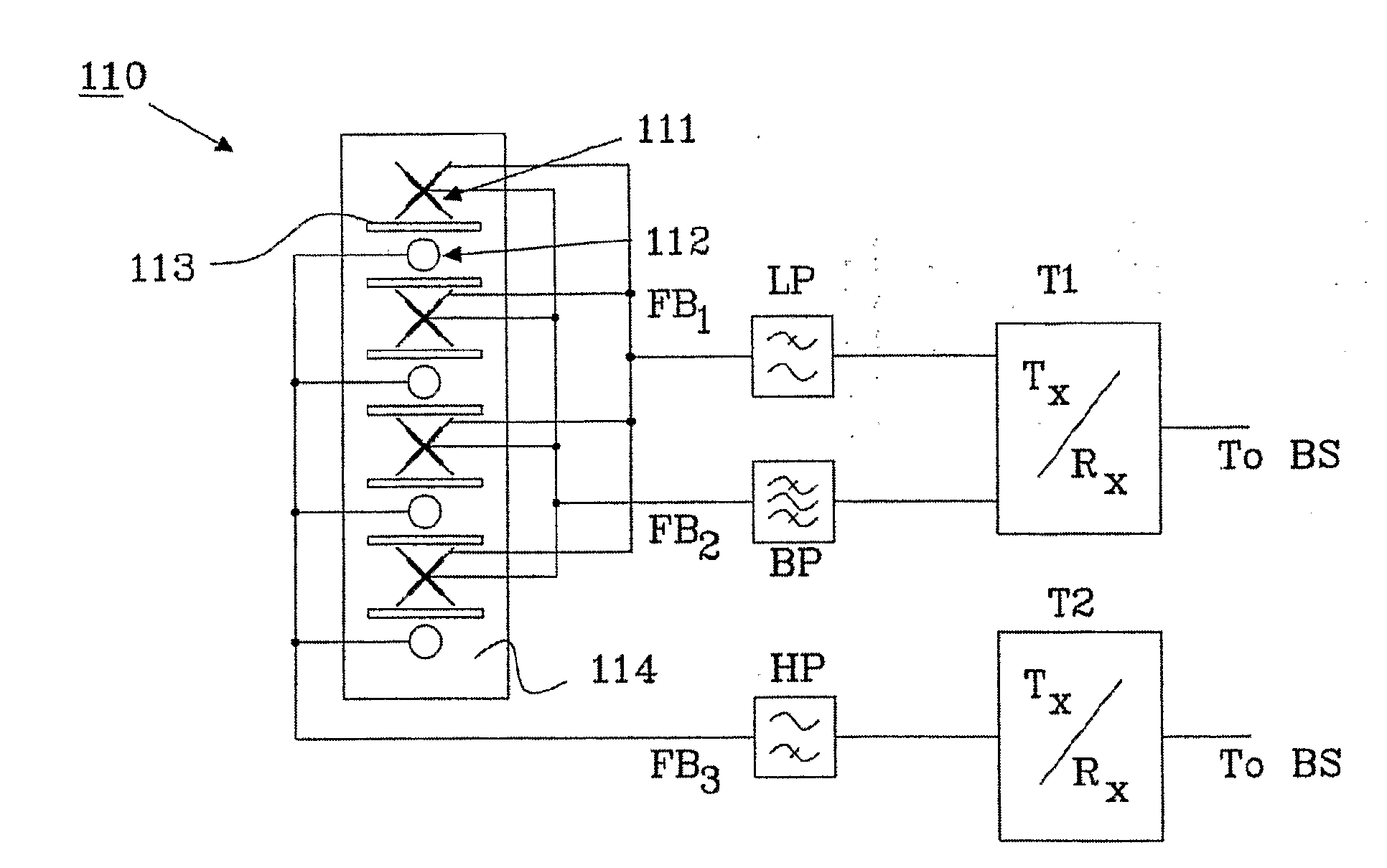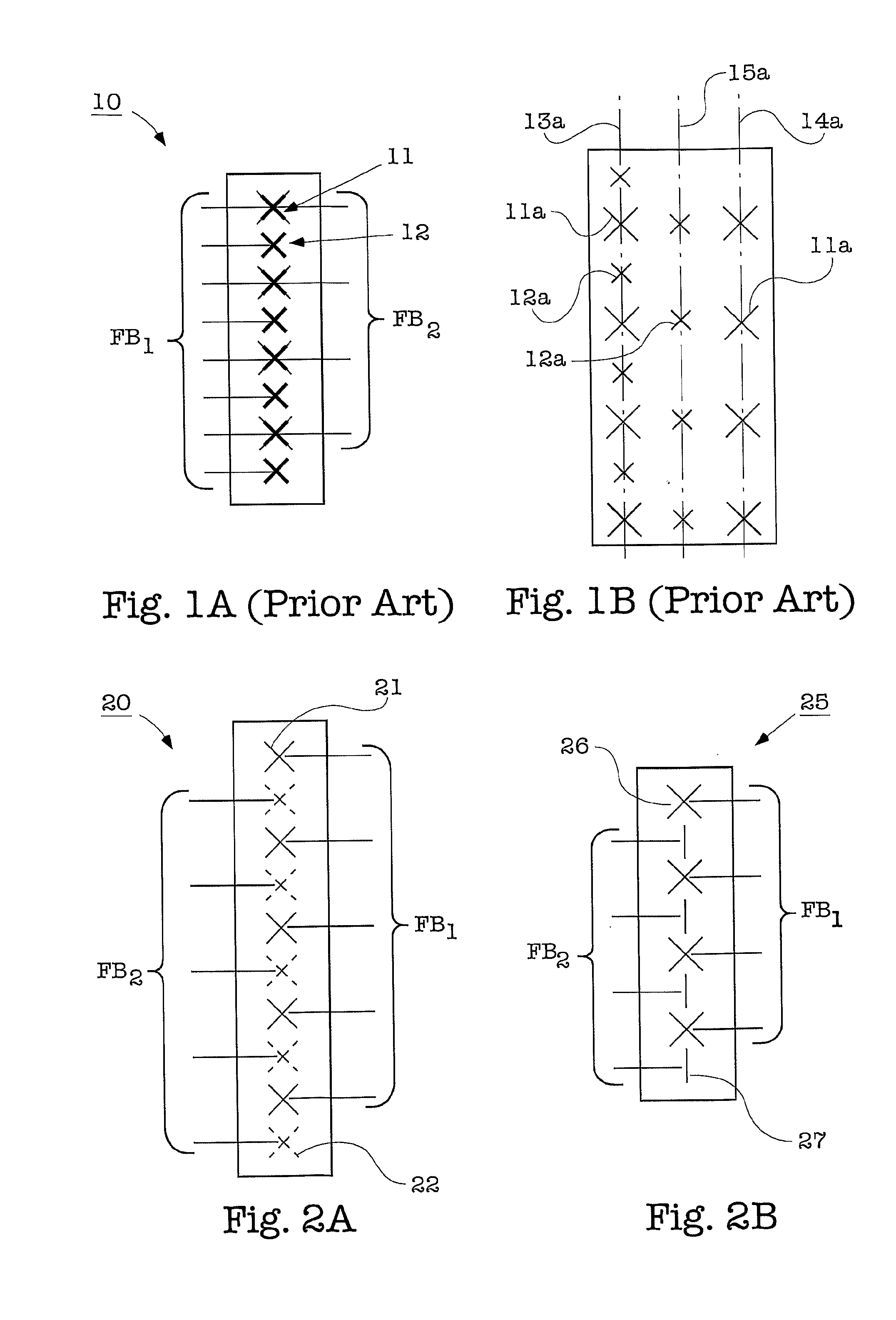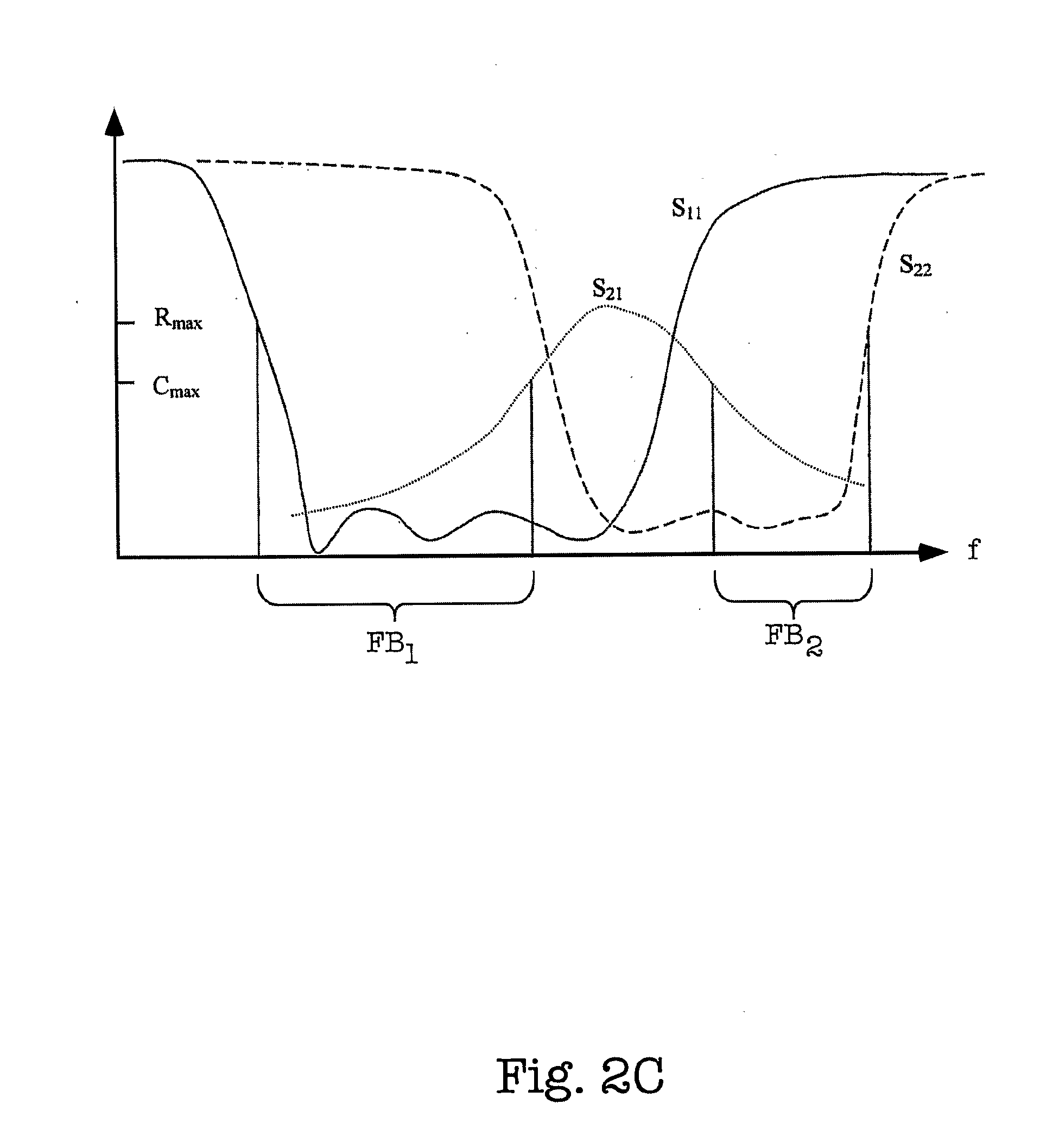Antenna arrangement with interleaved antenna elements
an antenna element and interleaved technology, applied in the direction of polarised antenna unit combinations, individually energised antenna arrays, resonant antennas, etc., can solve the problems of consuming space, affecting the performance of the antenna, so as to reduce the coupling and minimize the space needed
- Summary
- Abstract
- Description
- Claims
- Application Information
AI Technical Summary
Benefits of technology
Problems solved by technology
Method used
Image
Examples
second embodiment
[0041]In FIG. 4, a perspective view of a dual band antenna array 40 is shown. The dual band antenna array 40 contains two types of antenna elements, a first type 41 for the lower frequency band and a second type 42 for the higher frequency band. As an example, the first type of antenna elements 41 only receives RF signals within a range of 1920-1980 MHz and the second type of antenna elements 42 only transmits RF signals within a range of 2110-2170 MHz, which leaves a suppressed frequency band of 130 MHz therebetween. Thereby a traditional antenna for the UMTS band is replaced by a dual band antenna with separate antenna elements for the RX band and Tx band, respectively, so that simplified Tx and Rx radio chains can be realized.
[0042]Both types 41 and 42 of antenna elements are made of a DRA (Dielectric Resonator Antenna) which are considerable smaller than conventional patch antennas. The drawback with the DRA is that they might have a narrow bandwidth compared to other types of a...
third embodiment
[0043]In FIG. 5, a perspective view of a dual band antenna array 50 is shown. The dual band antenna array 50 contains two types of antenna elements, a first type 51 for the lower frequency band and a second type 52 for the higher frequency band. As an example, the first type of antenna elements 51 transmits and receives RF signals within a range of 1710-2170 MHz, which is similar to the antenna element 31 described in connection with FIG. 3. The second type of antenna elements 52 transmits and receives RF signals within a range of 2.5-2.7 GHz, which is the same frequency band as antenna element 32 (FIG. 3) operated within.
[0044]A difference between the previously described antenna element 32 and the antenna element 52 is the type of antenna element being used. In the third embodiment described in connection with FIG. 5, a DRA is used as the second type of antenna element. Although the DRA might have a narrow bandwidth, the second antenna element will be sufficient to ensure proper o...
PUM
 Login to View More
Login to View More Abstract
Description
Claims
Application Information
 Login to View More
Login to View More - R&D
- Intellectual Property
- Life Sciences
- Materials
- Tech Scout
- Unparalleled Data Quality
- Higher Quality Content
- 60% Fewer Hallucinations
Browse by: Latest US Patents, China's latest patents, Technical Efficacy Thesaurus, Application Domain, Technology Topic, Popular Technical Reports.
© 2025 PatSnap. All rights reserved.Legal|Privacy policy|Modern Slavery Act Transparency Statement|Sitemap|About US| Contact US: help@patsnap.com



